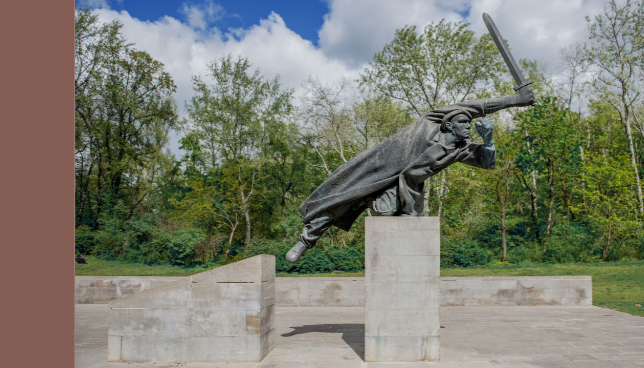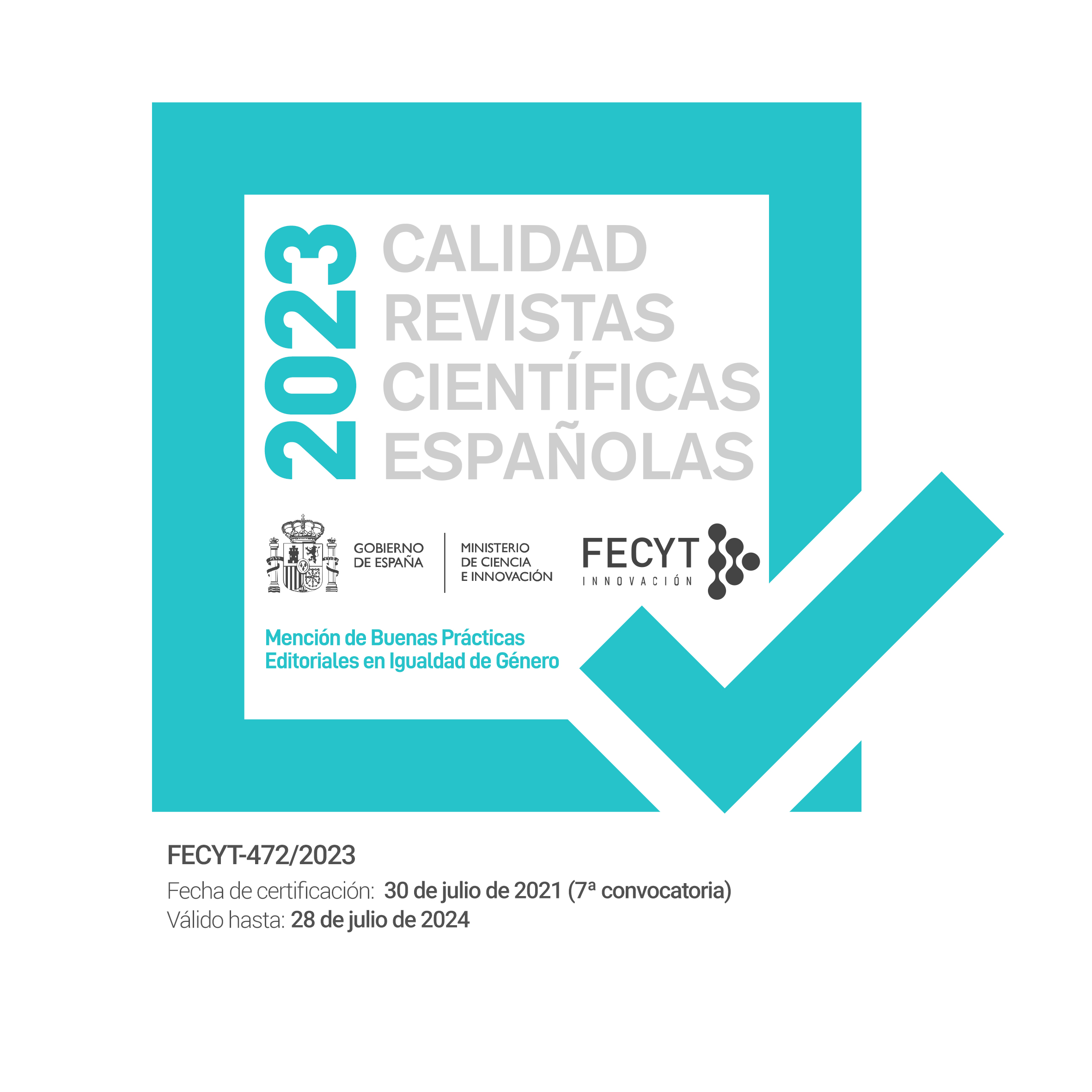“Das Kommt Mir Spanisch Vor“. Shared Conflictive Heritage of Dictatorship
“Eso parece español”. El Patrimonio Conflictivo Compartido de las dictaduras
DOI:
https://doi.org/10.30827/erph.34.2024.31371Palabras clave:
Guerra Civil Española, Segunda Guerra Mundial, Guerra Fría, Berlín Este, Berlín Oeste, MemorialResumen
El siguiente artículo es un estudio de caso local que examina la herencia compartida del fascismo alemán y español en Berlín y su revalorización artística crítica utilizando como ejemplo lugares históricos y monumentos de arte y arquitectura del siglo XX. El texto se basa en las experiencias y debates controvertidos sobre la conservación y restauración del patrimonio en la capital alemana tras la apertura del Muro de Berlín (1989/90) y la caída del Telón de Acero en Europa (1989/1991). También se ponen de manifiesto las diferencias características en la
recepción de la historia y el patrimonio cultural entre los sectores occidental y oriental de Berlín después de 1945. El texto debe impulsos esenciales al reciente Grupo de Acción «Enfoques Integrados y Globales para el Patrimonio Disonante en Europa» de la «Asociación Cultura y Patrimonio Cultural» en el marco de la «Agenda Urbana de la UE» y pretende ser una contribución a la actual discusión en la II Conferencia Internacional “patrimonio y conflicto: Debate sobre la gestión y el tratamiento de un objeto polifacético”. El artículo se opone a una iconoclasia políticamente motivada de símbolos y monumentos de sistemas autocráticos del pasado y aboga por su reevaluación crítica y comentario in situ.
Descargas
Citas
ALLIED CONTROL COUNCIL (1946). Directive No. 30 on the removal of German monuments and museums of a military and National Socialist character, of 13 May. In <https://www.lwl.org/westfaelische-geschichte/nstopo/normen/1946-05-13.pdf> [Accessed: 18.04.2024].
BLAUERT, E. (2004). Walter Krüger, 1888 - 1971, Johannes Krüger, 1890 - 1975: Architekten. Berlin: Kunstbibliothek.
BLUMERS ARCHITEKTEN (s.d.). Wiederaufbau Spanische Botschaft. In <https://www.blumers-architekten.de/de/projekte/details/spanische-botschaft> [Accessed: 18.04.2024].
BRAUNEIS, W., & GROSS, R. (2021). Die Liste der „Gottbegnadeten“. Künstler des Nationalsozialismus in der Bundesrepublik. Berlin: Deutsches Historisches Museum.
DÜLFFER, J., THIES, J., & HENKE, J. (1978). Hitlers Städte. Baupolitik im Dritten Reich. Eine Dokumentation. Köln / Wien: Böhlau Verlag Gmbh. DOI: https://doi.org/10.7788/boehlau.9783412308285
ENGLERT, K., & TIETZ, J. (2004). Botschaften in Berlin. Berlin: Mann Verlag, Gebr.
GRUNDL, B., AXTHELM, A., & DAMIAN, U. (1987). Dokumentation Diplomatenviertel Berlin-Tiergarten. Vergangenheit - Wettbewerb 1985/86 - Gegenwart 1987. Berlin: Bauausstellung Berlin GmbH.
LANDESDENKMALAMT BERLIN (1996). Baudenkmale in Berlin. Bezirk Friedrichshain (Denkmaltopographie der Bundesrepublik Deutschland). Berlin: Nicolaische Verlagsbuchhandlung.
LANDESDENKMALAMT BERLIN (2005). Denkmale in Berlin - Ortsteile Moabit, Hansaviertel und Tiergarten (Denkmaltopographie Bundesrepublik Deutschland). Petersberg: Michael Imhof Verlag.
LANDESDENKMALAMT BERLIN (2013). Gartendenkmale in Berlin. Parkanlagen und Stadtplätze. Petersberg: Michael Imhof Verlag.
LANDESDENKMALAMT BERLIN (2018). Gartendenkmale in Berlin. Nachkriegszeit bis Ende der 1960er Jahre. Petersberg: Michael Imhof Verlag.
LARSSON, L. O. (1978). Die Neugestaltung der Reichshauptstadt. Albert Speers Generalbebauungsplan für Berlin. Stuttgart: Hatje Cantz Verlag.
LICHTBILD. (s.f.). Spaniens Himmel über Berlin. In <https://lichtbild.org/spaniens-himmel-ueber-berlin/> [Accessed: 18.04.2024].
MINISTERIO DE ASUNTOS EXTERIORES, UNIÓN EUROPEA Y COOPERACIÓN (2023). “#EmbassyOfTheMonth - Spanish Embassy in Berlin, Germany”. YouTube. In <https://www.youtube.com/watch?v=sjmS1qg2lfI> [Accessed: 18.04.2024].
OCÓN FERNÁNDEZ, M. J. (1994). “Die neue Spanische Botschaft in Berlin (1938-1943)”, Kritische berichte, n. 22, pp. 110-118, DOI: https://doi.org/10.11588/kb.1994.3.11380
OCÓN FERNÁNDEZ, M. J. (1995). “Repräsentationsarchitektur zwischen spanischem Faschismus und Nationalsozialismus”, Jahrbuch des Landesarchivs Berlin, pp. 141-154.
REICHHARDT, H. J., & SCHÄCHE, W. (1985). Von Berlin nach Germania: über die Zerstörungen der Reichshauptstadt durch Albert Speers Neugestaltungsplanungen: eine Austellung des Landesarchivs Berlin. Berlin: BRD.
SCHÄCHE, W. (1992). Architektur und Städtebau in Berlin zwischen 1933 und 1945, Die Bauwerke und Kunstdenkmäler von Berlin, vol. 17. Berlin: Mann Gebr.
SCHMIDT, D. (1972). Fritz Cremer: Leben, Werke, Schriften, Meinungen. Dresden: Verlag der Kunst, pp. 70-71.
SCHMIDT, H. (1981). Das Tiergartenviertel. Baugeschichte eines Berliner Villenviertels. Die Bauwerke und Kunstdenkmäler von Berlin, vol. 4. Berlin: Mann, 1981.
SENATSVERWALTUNG FÜR STADTENTWICKLUNG UND WOHNEN. (s.f.). Positionen und Empfehlungen des Landesdenkmalrates Berlin (Recommendation of the State Council for Monuments Berlin on the monument to the Spanish Fighters in Volkspark Berlin-Friedrichshain, Protocol of the session of 30 September 2016, Top 6). In <https://www.berlin.de/sen/stadtentwicklung/denkmal/landesdenkmalrat-berlin/positionen-und-empfehlungen/> [Accessed: 18.04.2024].
SPANIEN IN BERLIN. (2008). El cielo español sobre Berlín. In <http://spanien-berlin.de/index.html> [Accessed: 18.04.2024].
SPANIENKÄMPFER. (s.f.).Memorial to the German Members of the International Brigades in the Spanish Civil War, Berlin-Friedrichshain. In <https://spanienkaempfer.jimdofree.com/english-version-a-monument-in-need-of-explanation/> [Accessed: 18.04.2024].
WIKIPEDIA. (2024). Pedro Muguruza. In <https://en.wikipedia.org/wiki/Pedro_Muguruza> [Accessed: 18.04.2024].

Descargas
Publicado
Cómo citar
Número
Sección
Licencia
Derechos de autor 2024 Jörg Haspel

Esta obra está bajo una licencia internacional Creative Commons Atribución-NoComercial 4.0.
Las/os autoras/es conservan los derechos de autoría y otorgan a la revista el derecho de primera publicación (reproducción, edición, distribución, comunicación pública y exhibición).
Más infomación en Sobre la revista > Aviso de derechos de autor/a














